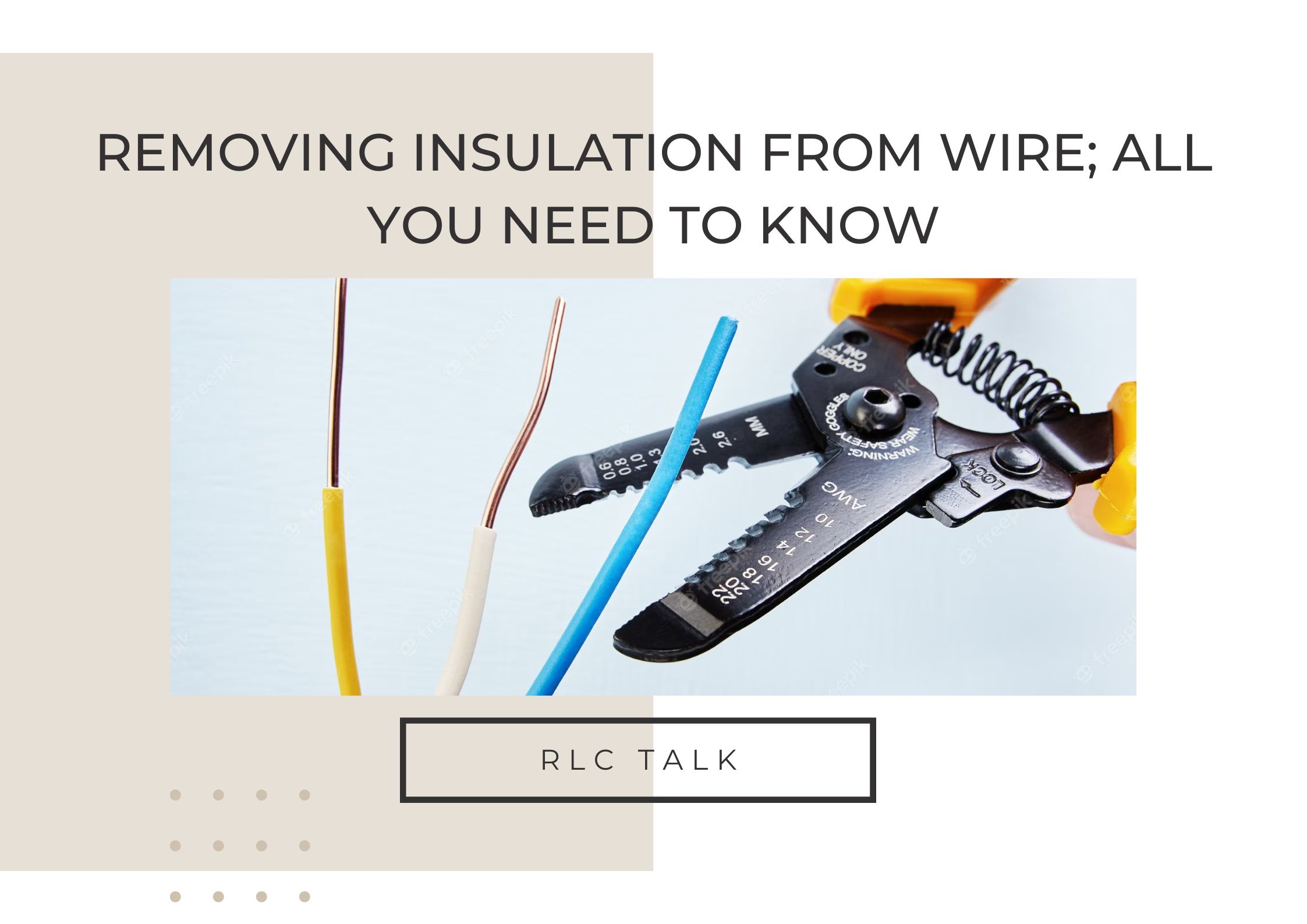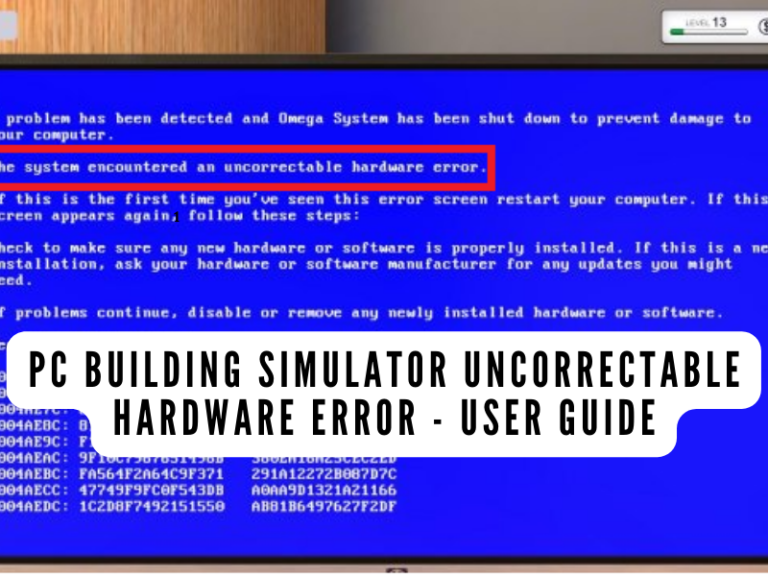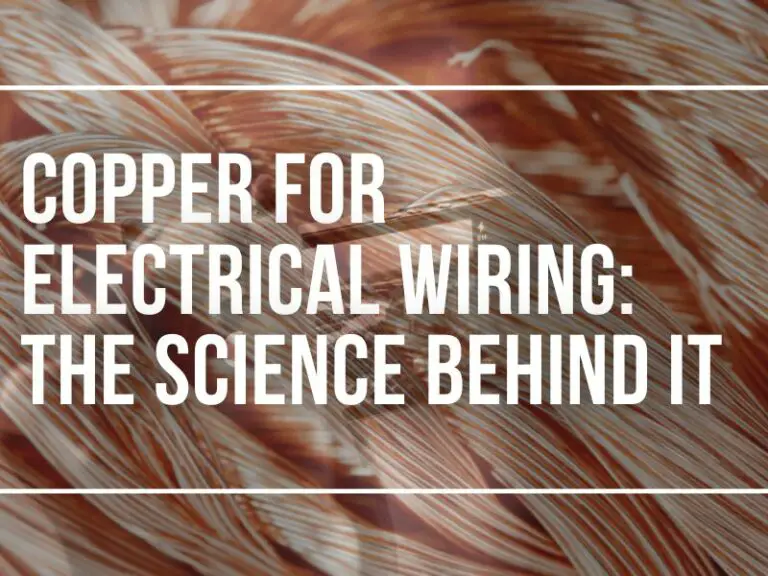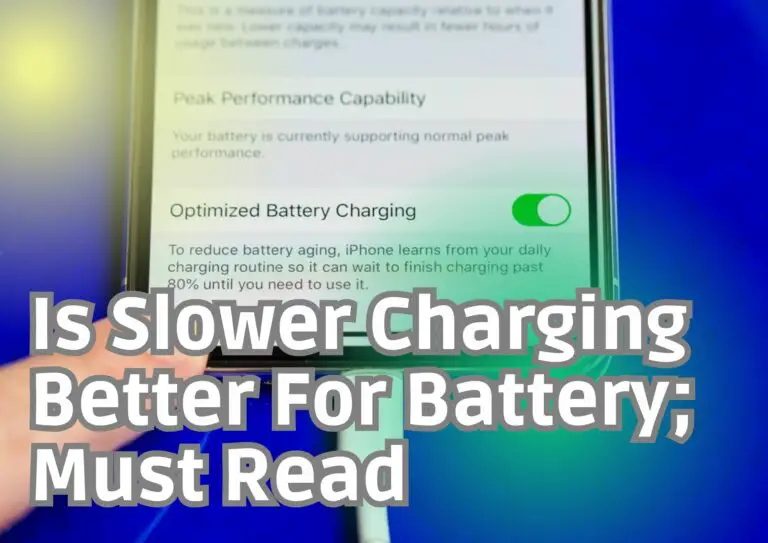Removing Insulation From Wire; All You Need To Know
Wire insulation is an important component in any electrical system because it protects the wire from damage and helps to prevent electrical shocks. However, there may be times when removing the insulation from a wire is necessary.
Perhaps you need to repair the wire or connect it to another component, or perhaps the insulation has become damaged and must be replaced. Whatever the reason, it’s critical to understand the proper techniques for removing wire insulation to avoid damaging the wire or injuring yourself.
In this article, we will look at various methods for removing wire insulation and offer advice on how to do so safely and effectively.
How to remove wire insulation without cutting wire?
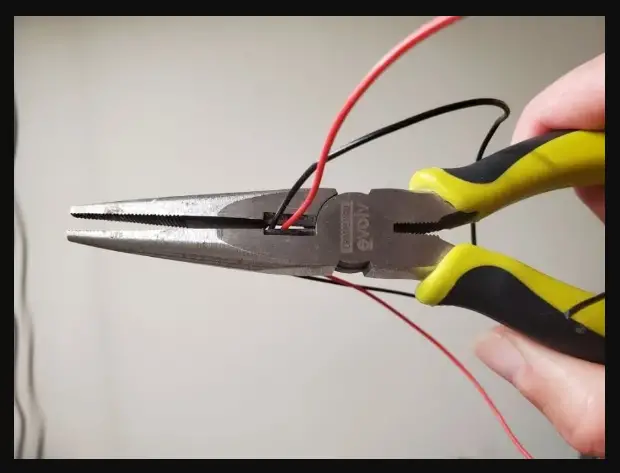
Here’s a step-by-step guide for removing wire insulation without cutting the wire:
Materials needed:
- Wire stripper
- Heat gun or hair dryer
- Pliers
Steps:
- Choose the appropriate wire stripper for the size of your wire. The wire stripper should have a cutting edge and not just a plier edge.
- Locate the section of wire that needs the insulation removed. Make sure you have enough space to work with and the wire is not under tension.
- Use the wire stripper to score the insulation by placing the wire in the appropriate gauge notch and gently squeezing the handles until the blades score the insulation but not the wire.
- Rotate the wire stripper around the circumference of the wire to score the insulation.
- Using your fingers or pliers, gently twist and pull the scored insulation away from the wire. Be careful not to pull too hard or you may damage the wire.
- If the insulation is not coming off easily, use a heat gun or hair dryer to apply heat to the insulation. Be careful not to heat the wire too much or you may damage it.
- Once the insulation is loosened, use your pliers to grip and pull it away from the wire.
- Repeat steps 3-7 as needed to remove any remaining insulation.
It’s important to note that when removing insulation, you should avoid cutting into the wire itself or damaging the wire strands. This can weaken the wire and compromise its ability to conduct electricity. By following these steps carefully, you can safely and effectively remove wire insulation without damaging the wire.
How to strip wires without a tool?
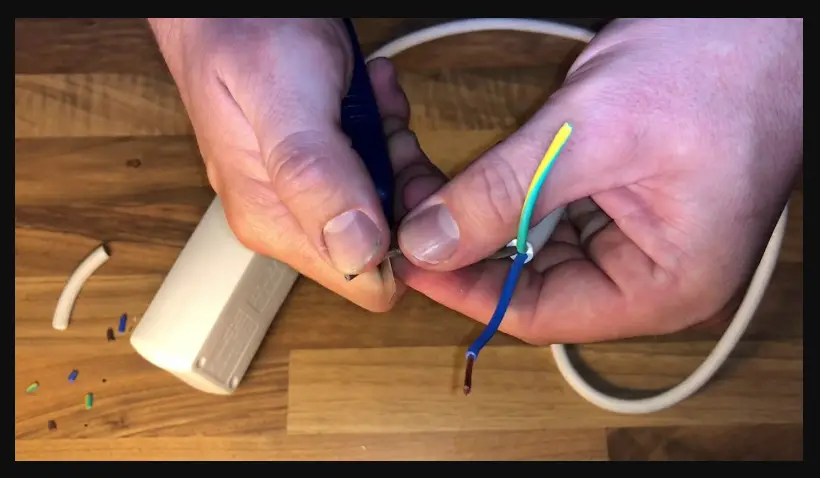
If you don’t have a wire stripper tool, there are a few ways to strip wires using common household items. Here are three methods:
Using a knife or scissors
Use a sharp knife or scissors to cut the insulation lengthwise, being careful not to cut into the wire.
- Gently pull the insulation away from the wire, using your fingers or pliers to grip and pull it off.
- Repeat as needed to remove any remaining insulation.
Using a lighter or matchstick:
- Hold the end of the wire near a flame from a lighter or matchstick for a few seconds until the insulation starts to melt.
- Use your fingers or pliers to grip the melted insulation and pull it away from the wire.
- Be careful not to overheat the wire or burn yourself.
Using a wire twisting method
Strip about 1 inch of the wire by gently pulling the insulation away from the wire with your fingers.
- Hold the stripped wire in one hand and use your other hand to grip the remaining insulation.
- Twist the insulation in a circular motion while pulling it away from the wire.
- This twisting motion should cause the insulation to break off cleanly from the wire.
While these methods can work in a pinch, they are not as precise or safe as using a wire stripper tool. If you plan on stripping wires frequently or for a project, investing in a wire stripper tool is recommended.
How to remove insulation from wire for scrap?
If you’re removing insulation from wire for scrap, it’s important to do it in a way that maximizes the value of the scrap metal. Here are the steps you can follow:
Materials needed:
- Wire stripper
- Pliers
- Scissors or knife
Steps:
- Gather the wire you want to scrap and sort it by metal type (e.g. copper, aluminum).
- Use the wire stripper to remove the insulation from the wire. Place the wire in the appropriate gauge notch and gently squeeze the handles until the blades score the insulation but not the wire.
- Rotate the wire stripper around the circumference of the wire to score the insulation.
- Use your fingers or pliers to gently twist and pull the scored insulation away from the wire. Be careful not to pull too hard or you may damage the wire.
- Once the insulation is removed, use scissors or a knife to cut any remaining insulation close to the wire.
- Bundle the stripped wire by metal type and store it in a container until you’re ready to take it to a scrap yard.
It’s important to note that some scrap yards have specific requirements for accepting scrap wire. Make sure to check with your local scrap yard to ensure you’re following their guidelines and maximizing the value of your scrap metal. Additionally, be sure to take safety precautions when handling scrap wire, as it may still have sharp edges or other hazards even after the insulation is removed.
How To Cap Off Electrical Wires?
rlc talk
What are the chemicals can be used to remove copper wire insulation?
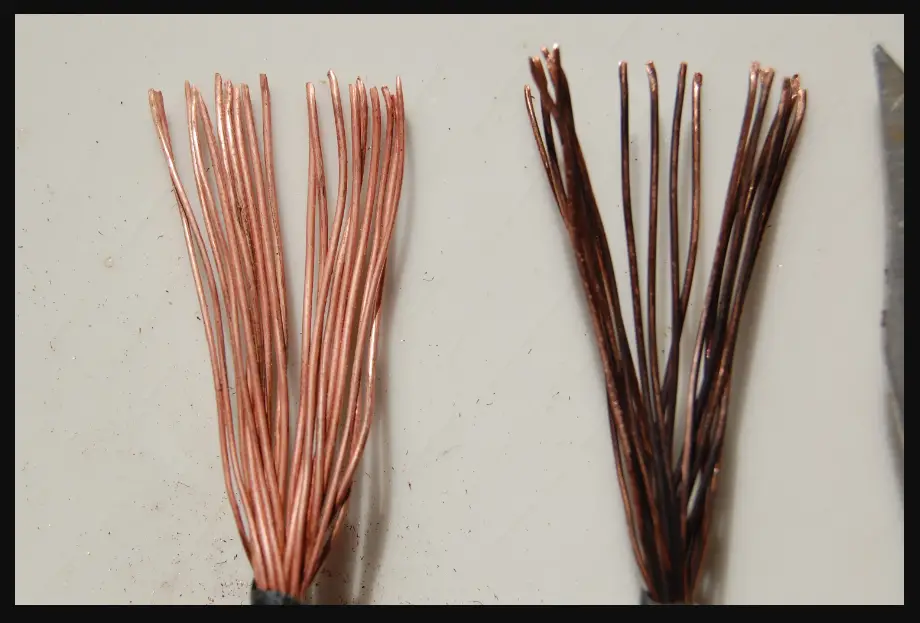
There are several chemicals that can be used to remove copper wire insulation, but it’s important to note that they can be hazardous and should only be used with caution and proper safety measures. Here are a few examples:
- Methylene chloride (dichloromethane)
This is a solvent that can dissolve many types of plastic insulation. It’s important to wear gloves, eye protection, and a respirator when using methylene chloride, as it can be toxic and may cause respiratory irritation.
- Nitric acid
Nitric acid is a strong acid that can dissolve many types of insulation, including some types of rubber and plastic. However, it can be dangerous to handle and should only be used with extreme caution and proper safety equipment.
- Sulfuric acid
Like nitric acid, sulfuric acid is a strong acid that can dissolve some types of insulation. It’s important to wear gloves, eye protection, and a respirator when handling sulfuric acid, as it can be corrosive and cause burns.
- Sodium hydroxide (caustic soda)
This is a strong base that can dissolve some types of insulation, including some types of plastic. It’s important to wear gloves and eye protection when handling sodium hydroxide, as it can be corrosive and cause chemical burns.
It’s worth noting that using chemicals to remove insulation from copper wire can be hazardous and should only be attempted by experienced professionals with proper training and safety equipment. Additionally, many types of insulation can be removed using mechanical methods like wire stripping tools or manual methods like using a knife or scissors.
Maximizing Conductivity: The Importance of Solder-Coated Wire Conductors
rlc talk

